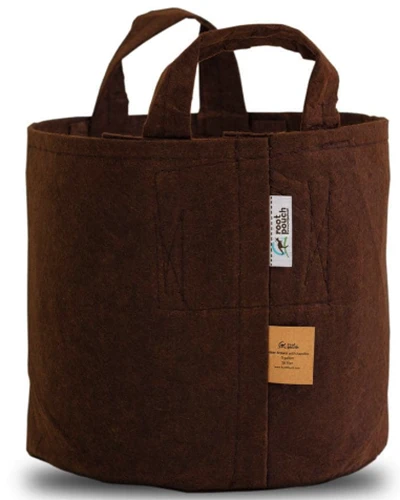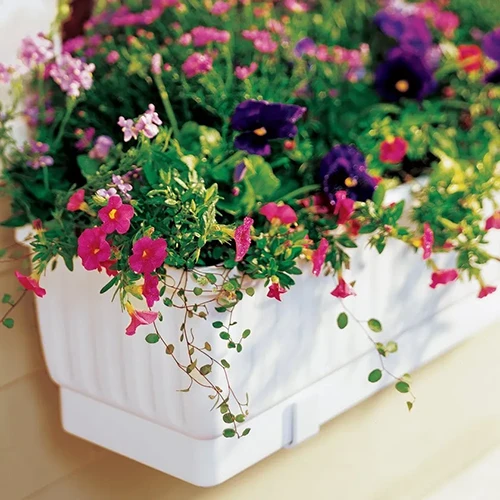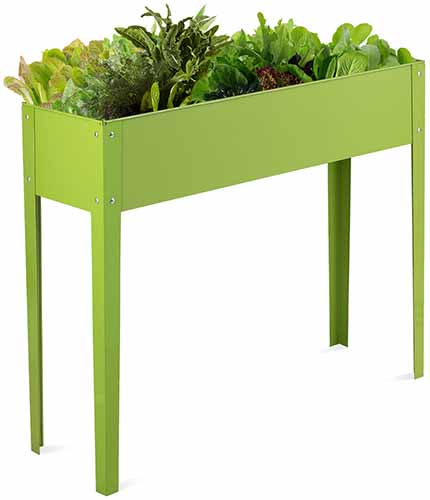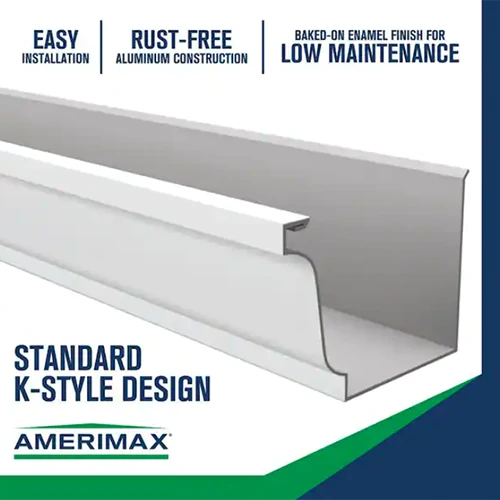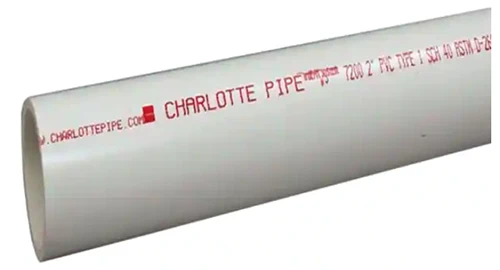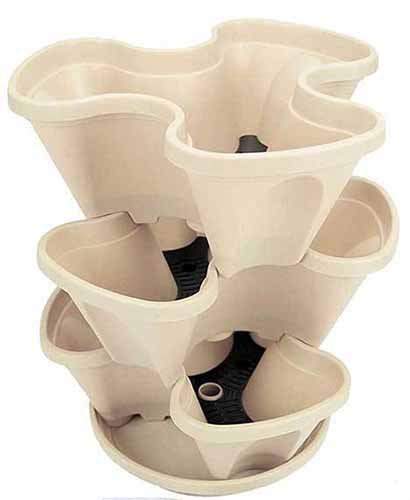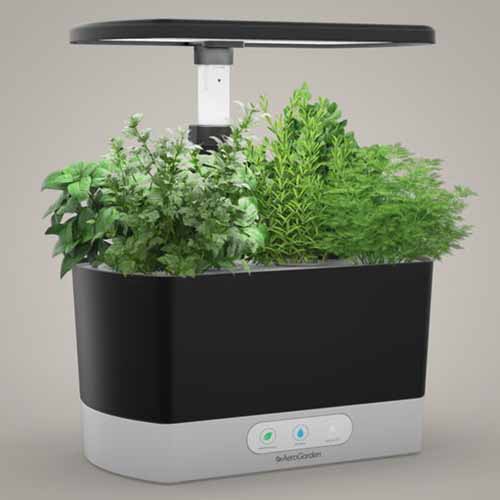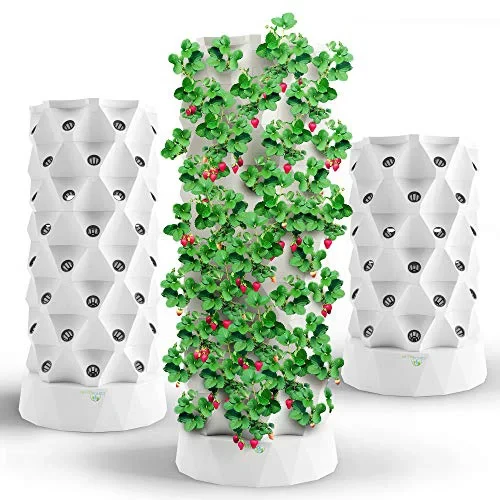Growing lettuce in containers is easy, but choosing an appropriate container may not be.
Certain features are important to support the health and productivity of this crop. In fact, I’d say choosing the best pot or planter is the one aspect of container gardening that requires the most thought.
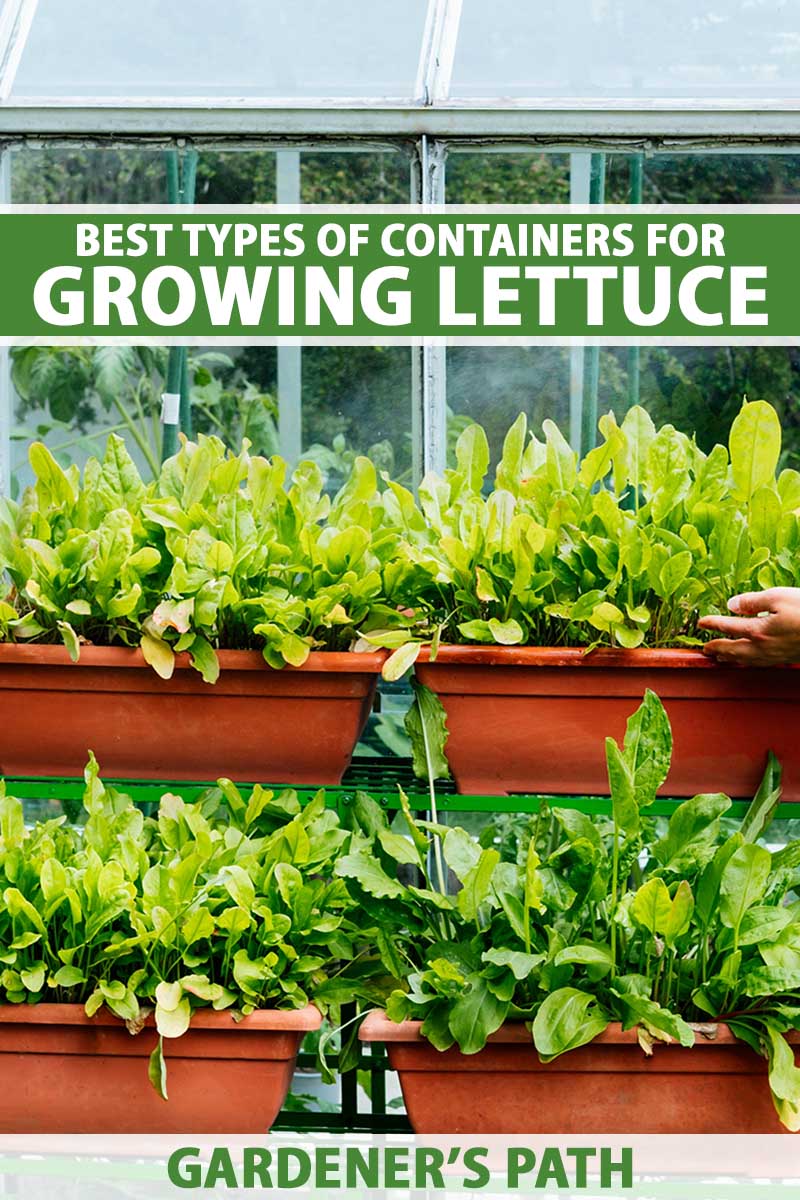
We link to vendors to help you find relevant products. If you buy from one of our links, we may earn a commission.
As someone who’s a bit of a potting perfectionist, I’ve racked up quite a few hours spent perusing the goods online and in garden centers over the years, and I can attest to the multitude of available options.
It can be a little intimidating to try to make the best decision with so many choices to sort through.
There are many ways to use recycled or upcycled materials to create a less expensive container garden to grow lettuce as well, so don’t be afraid to get creative with what’s on hand.
This is especially true if you’re trying to fill out an urban landscape or working with a tight budget.
It’s not impossible to begin with little to no money out of pocket for new materials.
I’ve seen everything imaginable in use, from kiddie pools to straw bales, soda bottles, and even worn-out old jeans.
Some thrifty gardeners choose function over form and simply pop evenly spaced holes into one side of a bag of garden soil to sow seeds directly inside.
This roundup is a collection of nine of the best potting vessels that I’ve used.
They make caretaking easier and can even aid in boosting production many times over, if that’s one of your goals. Here’s a quick preview of everything we’ll cover, up ahead:
The Best Containers for Growing Lettuce
This list will give you the tips you need to begin with the right vessel. You can find complete instructions for planting and growing lettuce in containers in our guide.
1. Grow Bags
I’d bet most readers have at least seen or heard about grow bags before.
They’ve been around for decades and have become pretty popular, especially for use with small or short-season crops grown outdoors.
Bags that are made of canvas or felt are a better choice than the polypropylene types on the market.
They last longer, don’t shred as easily, and rarely encounter mold issues because they allow for transpiration.
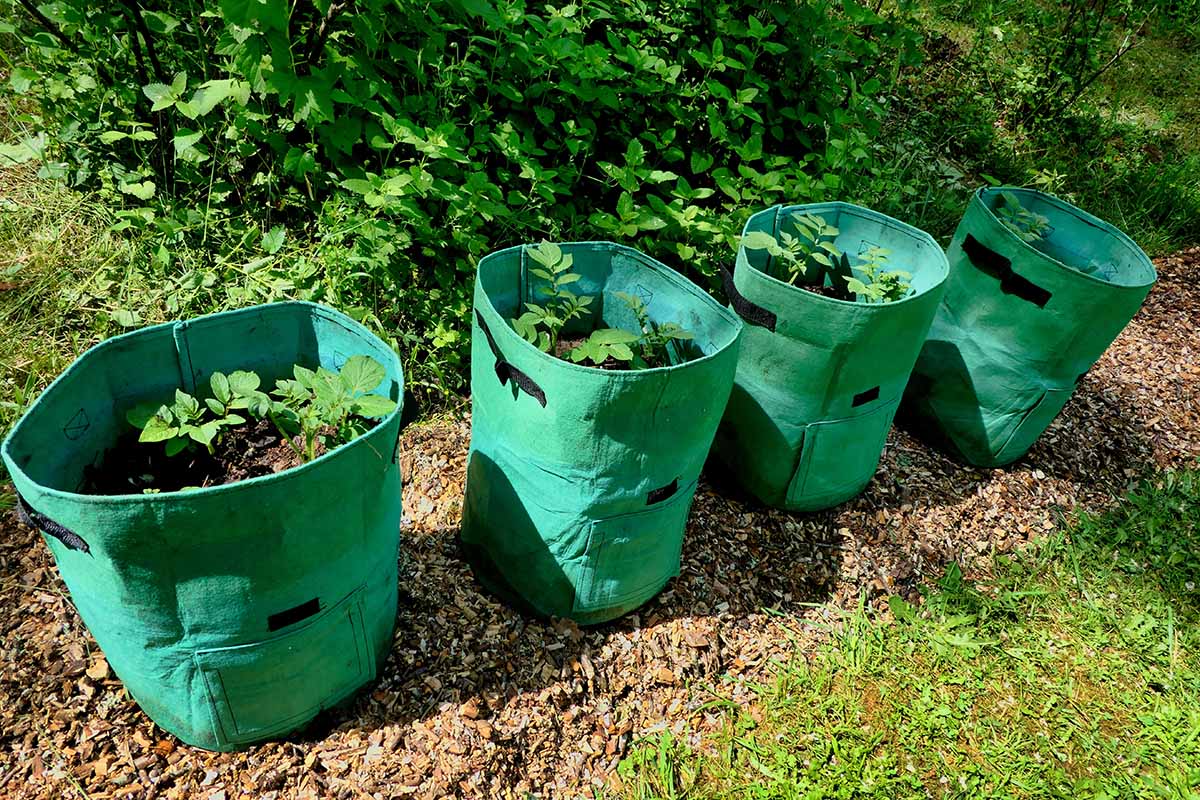
There are a few things to bear in mind with these:
First, these bags can become very heavy when they’re full of damp soil, so place them in a permanent location before they’re filled.
It’s also important to make sure the handles are reinforced so they don’t tear off if you do need to move them. This is a common problem, especially with larger bags.
Dampness can sometimes be an issue. Don’t place them in a spot where they can damage or stain whatever’s beneath them, such as a concrete patio or wooden decking, and don’t group them closely together.
Tight quarters can stifle airflow and cause them to deteriorate faster, or this may lead to mold and mildew issues.
A good rule of thumb to follow is to use one five-gallon bag per one to two smaller heads of lettuce.
If your goal is to produce more than a dozen heads or several of a larger variety, a 65-gallon or larger bag would be a good size if you wish to grow them all together.
For leaf types, four to six can typically be planted in about one square foot of space.
Root Pouch 5-Gallon Fabric Bag
My personal preference is for bags from Root Pouch. They offer a huge range of sizes, from two gallons up to 400 gallons, with sturdy construction and a broad palette of colors available.
You can find a large selection of their bags from Home Depot.
2. Plastic Bottles
Need a cheap, budget-friendly way to plant lettuce? Why not use materials that are headed to the landfill or recycling center? It saves money and helps to protect the environment – that’s a win-win.
There are billions of plastic bottles floating around in the ocean and buried in landfills all over the world, so diverting a dozen or more from the waste stream to grow food is a great choice.
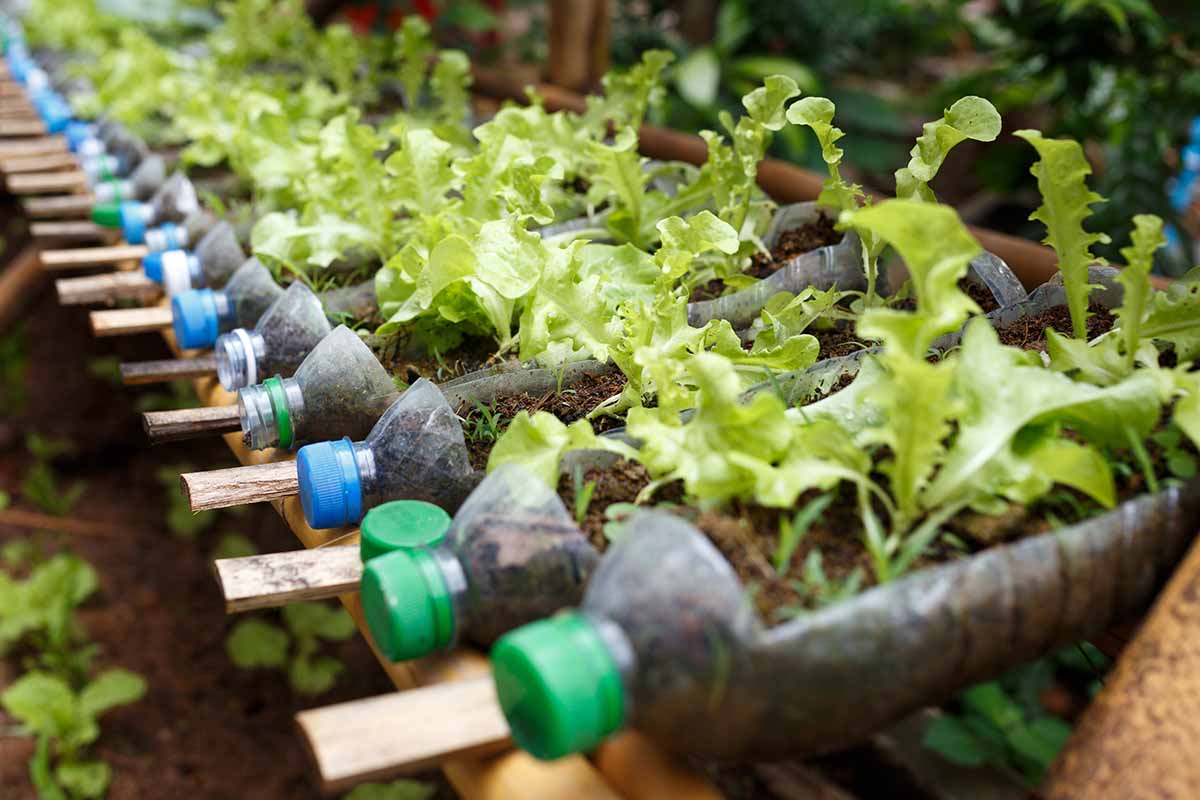
Simply empty the contents as you would normally, thoroughly wash the bottles with warm, soapy water, and cut a rectangular opening of adequate width and length for plants to grow, with the bottles laying on their sides.
Then, decide if you’ll hang or mount them before filling them with soil and planting seeds or starts inside. Leave the caps on to hold the soil in.
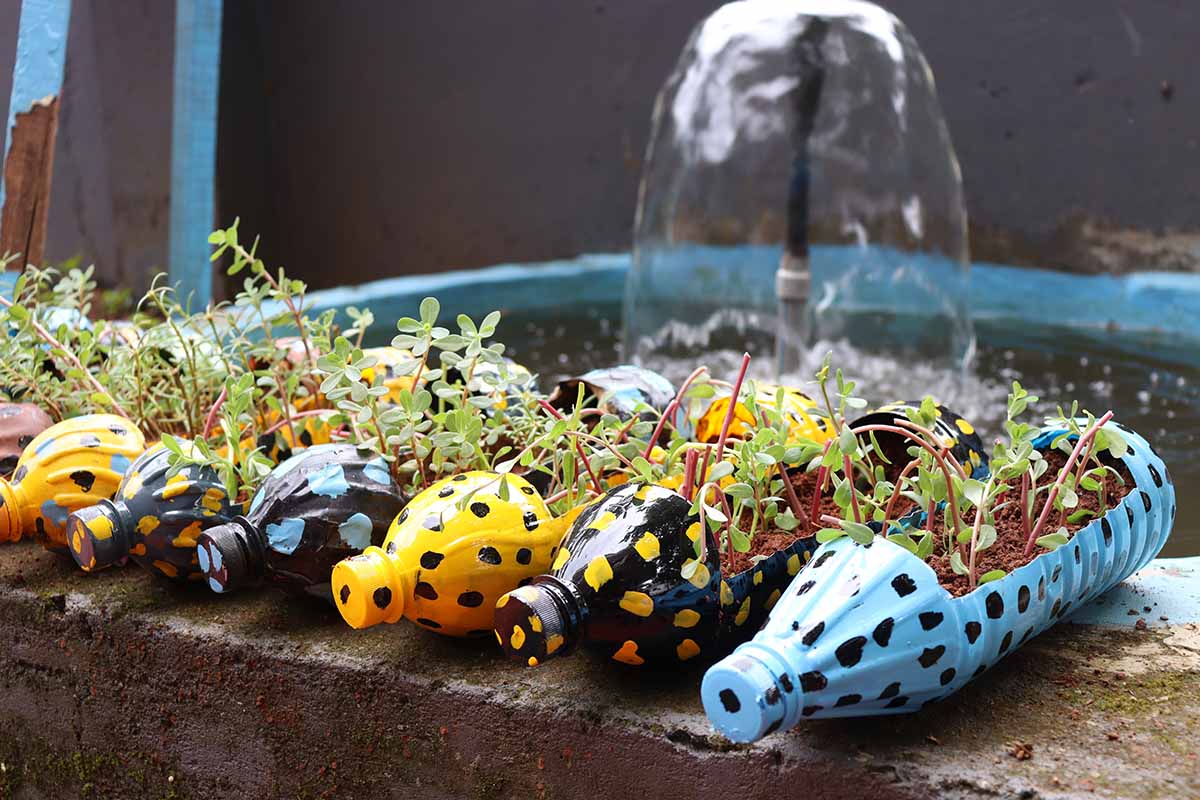
Hanging is popular because they can be strung together on twine or string and draped like a curtain against a wall or fence, or between wooden poles from an old clothesline.
They can even be used to make a privacy screen of sorts while also producing food.
To hang the bottles, punch two holes in each end, with two near the base and two near the cap.
The holes should be parallel to each other at the top and bottom of the bottle, with the rectangle you’ve already cut out facing upward. Punch the holes in roughly the same location on each bottle so they can be strung together evenly.
Next, run twine or string through the holes and tie a knot at regular intervals to keep the bottles spaced as you’d like. Leave enough room for the mature height of the lettuce you’ll be growing.
Make sure the holes aren’t completely sealed off so excess water can drain out. If you’re using larger two-liter bottles, it may be necessary to add a couple more drainage holes.
Larger bottles can be placed on the ground on their side, or mounted on a surface such as a wooden pallet using a staple gun.
Bear in mind that plastic bottles won’t hold up forever, so don’t make them too difficult to remove and replace when it’s time. And don’t forget to recycle!
3. Window Boxes
Window boxes are nice because they only take up a narrow footprint.
They can be used traditionally, hanging from brackets below a window frame, or they may be placed on a windowsill, deck, or other area where they don’t impose.
This is useful not only in planting beautiful flowers or herbs, but for shallow-rooted plants like lettuce as well.
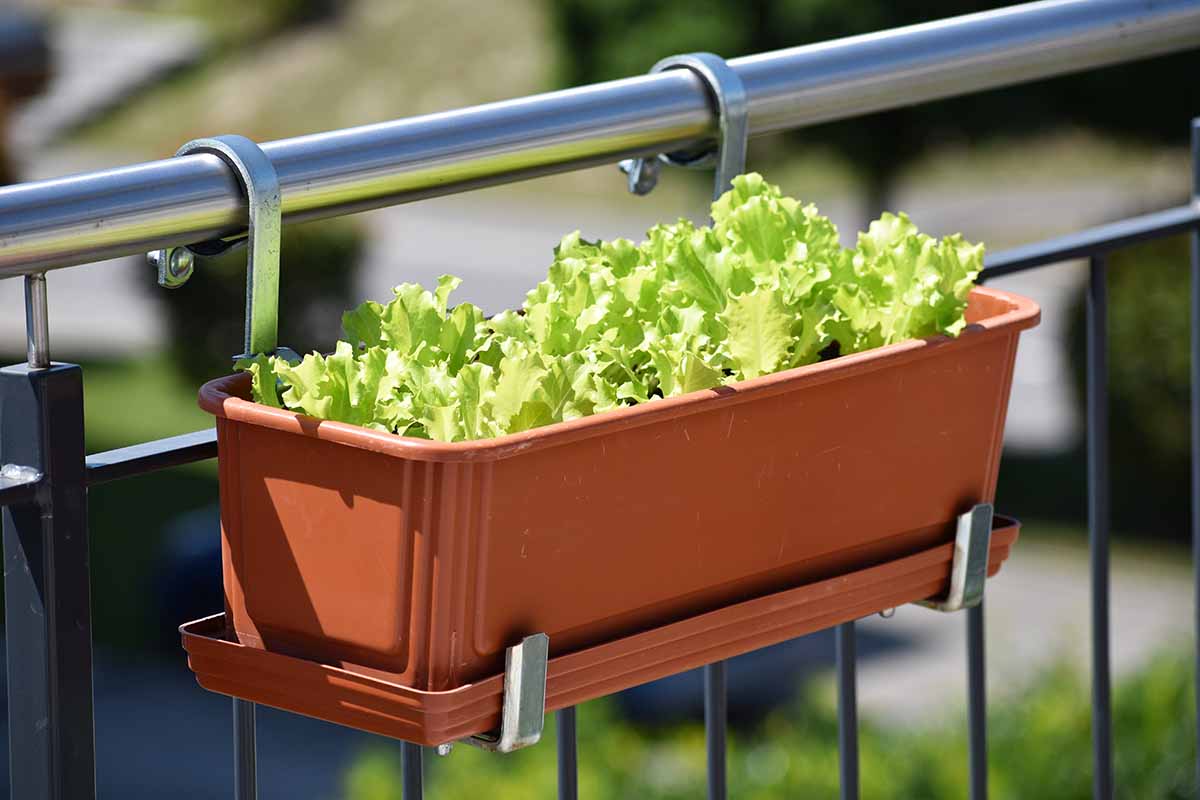
Most boxes range from four to 12 inches deep and 12 to 48 inches in length, although you may find some larger than this.
In general, a six- to eight-inch-deep box is perfectly adequate for growing lettuce.
The length and width will depend on the number of plants you wish to grow and the variety that you choose as well as the space you have available.
This 23-inch self-watering box from Gardener’s Supply Company is a good choice for potting two to four average-size heads or eight to 12 leaf types.
Note, however, that it’s made of plastic with a reservoir that holds excess water, so you may need to adapt your watering practices.
4. Raised Beds
The term “raised bed” can be used to describe a box or container that is filled with growing media and raised above ground level.
They’re often constructed from wood or metal, and often only about eight to 12 inches deep, although some can be deeper – these are fully customizable.
For those of us whose spines doth protest from years spent tending the earth below, and gardeners who may have other mobility challenges, this 31.5-inch-high by 40-inch-long by 13-inch-wide raised box from Costway, available via Walmart, is an excellent pick.
This container on legs is constructed from galvanized steel for years of use.
It also has a drainage hole that allows excess water to run off, but you may need to place a piece of mesh over the hole if you plan to fill it with soil rather than placing plants in pots inside it.
Other beds can be built on-site in your yard or garden, with dimensions and materials of your choice.
5. Gutters
While they’re an unconventional choice, gutters make outstanding containers for growing plants like lettuce, with shallow roots.
But I’m referring to the material here, not the ones already attached to your house.
A long gutter can be used to sow a row of heads or many of the leafy varieties, and they can be mounted or hung from a wall, fence, or frame to form a cascading system.

Aluminum or PVC eavestrough gutters can be purchased from most hardware stores and cut to length to be mounted on a frame or hung against a wall or fence.
Because they don’t come with drainage holes, they’ll need to be drilled in, or you can approach the situation from a different angle.
Hanging at a subtle incline to allow excess water to flow off from one end works well, and if there are other gutters below, each can be hung at alternating angles to filter the excess water through from the top down.
Using this type of gravity-fed system is wise if you’ve got moisture-loving specimens such as spinach or peas planted on the bottom tier. Otherwise, make sure excess water is channeled away.
Gutter runoff can be diverted to rain barrels, into garden plots, or onto a downspout splash block to run into the grass.
Head over to Amerimax Home store via Home Depot to find aluminum or vinyl K-style gutter sections in five-inch-deep by 10-foot-long measurements.
6. PVC Pipes
Another budget-conscious choice for growing lettuce plants is polyvinyl chloride, or PVC, piping.
This type of piping is sold at hardware stores and used in plumbing systems in many homes nowadays.
One of the reasons that PVC has become a common building material is because it’s extremely durable – these pipes usually last for decades, even in less than ideal conditions.
This means they’ll hold up outdoors and you may not need to replace them often, or at all.
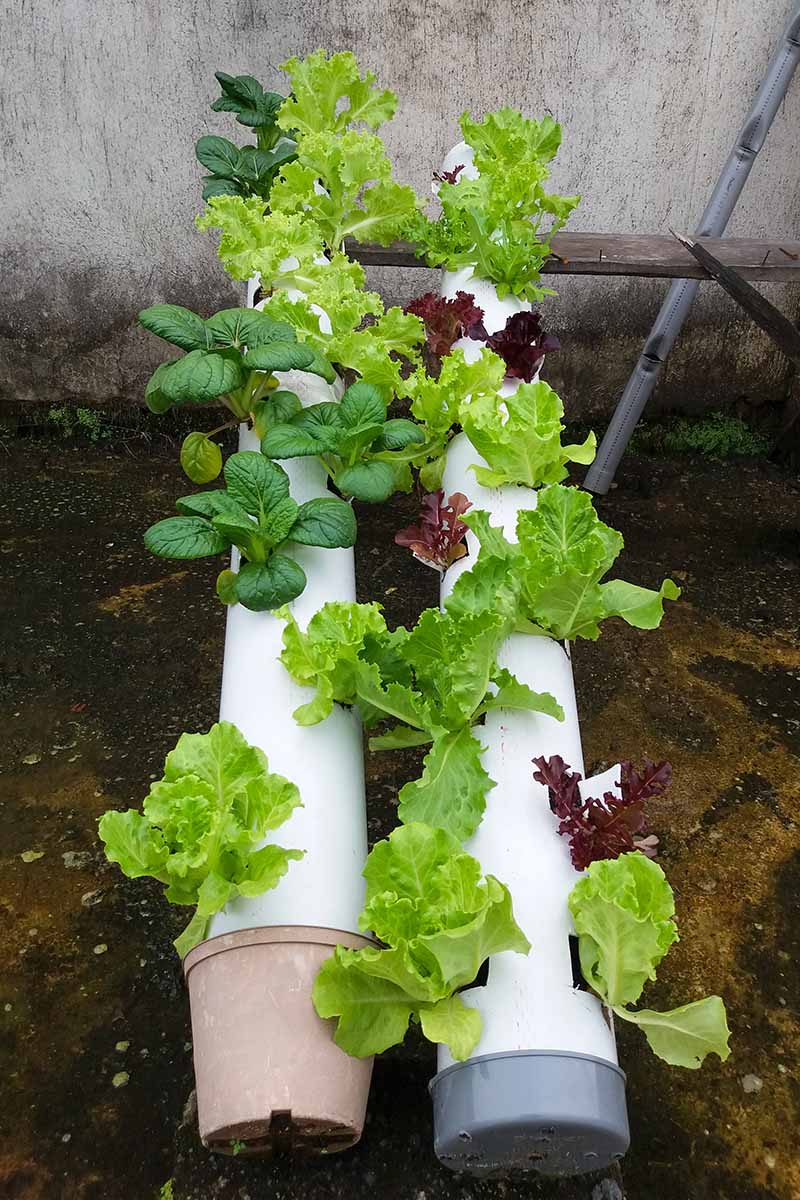
Just as with gutters, PVC pipes can be purchased and trimmed to the desired length or mounted as-is.
Large planting holes can be cut using a drill and countersink, wood boring, or mandrel bit – just be sure to clamp or tape down the pipe so it doesn’t roll while you’re working.
Be sure to drill some drainage holes at regularly spaced intervals on the underside of the pipe as well. You’ll also want to cap the ends of the pipes to avoid losing soil over time.
I suggest mounting the prepared pipes in their permanent location prior to filling them with soil – trust me, this is advice that comes from experience!
They can become very heavy and difficult to move after they’ve been filled.
A 10-foot-long section of schedule 40 PVC pipe four inches in diameter can be purchased from Charlotte Pipe via Home Depot.
Schedule 40 pipes are robust and designed to last in outdoor applications.
7. Towers
Towers are such a great choice for producing a larger volume of heads or leaves of lettuce within a tiny footprint. Making use of vertical space is like stacking multiple garden beds right on top of one another.
These units may rely on either water or soil as the substrate and can become rather heavy when they’re full.
Just as with grow bags, it’s best to choose a permanent (and sturdy!) location for their placement.
A Mini Garden Stacker from True Leaf Market is exactly right for this job.
Not only can you grow nine heads of lettuce in an 11-by-24-inch space but you can also hang this one!
Bringing the plants up off of the ground can reduce exposure to ground-dwelling pests and soilborne pathogens as well.
8. Hydroponic Systems
Space-saving countertop hydroponics systems like the Aerogarden, which I reviewed, are great when used indoors to create an accessible, easy to maintain salad garden.
Lettuce is ideal for a system such as the Harvest model, available directly from Aerogarden, or any of their other models like the Bounty, Harvest Elite, or Farm 12, which come in various sizes.
Because these units are designed for indoor use and rely solely on soilless substrate, they reduce the likelihood of pest or disease damage.
They’re excellent for gardeners who have physical challenges as well, since they can be placed within arms’ reach and require no weeding, heavy bagged soil, or repotting to maintain.
Producing a greater volume of greens is possible, either for yourself, your family, or for community projects, with a large hydroponic tower system.
Try the Nutraponics hydroponics system, available from Walmart with 46, 64, or 80 pots.
9. Pockets
Pocket gardens are newer kids on the block, a fantastic choice if you have no yard or deck space available whatsoever.
Urban gardeners may find these particularly useful since they can be mounted flat against a wall or fence, or hung on a frame, where they’ll take up very little room.
Pockets work well for producing several types of lettuce in a small area, sort of like hanging a square foot garden on the wall. They’re also perfect for increasing output with little effort, especially with this type of crop.
Be aware, however, that pockets can be made from different types of material, and some are more conducive to indoor, outdoor, or long-term growing than others.
For example, hard plastic pockets generally hold up better over time and against the elements, and create less mess, than those made of fabric.
They can also drip water from pockets on the lower rows, or lead to rotting or mold and mildew growth behind them if they’re hanging directly against a surface.
Avoid hanging them where that’s a concern and keep an eye on the lower pockets to make sure they’re not overwatered.

Plastic Pocket Vertical Planter
This 36-pocket plastic set has pockets hung from a frame that includes a self-watering irrigation system. You can pick one up from the Worth Garden store via Amazon.

Soft-pocket versions usually cost less and include dozens of planting spaces. Try this felt 36-pocket vertical hanging planter available via Amazon.
The Pot Is as Important as the Plant
As you can see, the choice you make can depend heavily upon where you’re growing lettuce and what type of setup is easiest for you to manage.

So, what’s the verdict? Have you found the right planter for your needs among the containers on our list?
We’d love to know which you’ve settled on and see some photos of your potted garden or container-grown lettuce!
Questions are always welcome as well, so please let us know how we can help, and we’ll do our best for you.
Ready to read more about growing lettuce? Check out these articles next:
